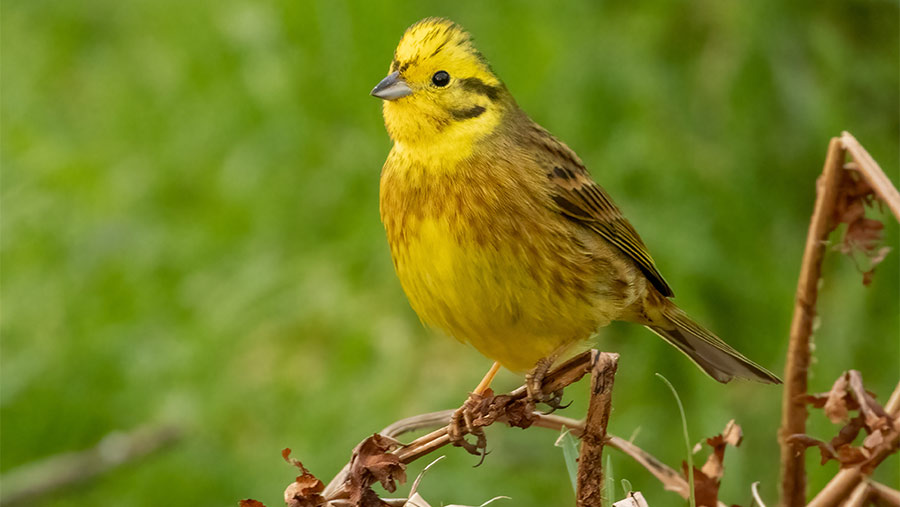Annual bird count highlights conservation efforts by farmers
 © Sarah/Adobe Stock
© Sarah/Adobe Stock Farmers counted 460,000 birds in this year’s Big Farmland Bird Count, which was organised by the Game and Wildlife Conservation Trust (GWCT) and sponsored by the NFU.
More than 1,700 farmers and land managers took part from 3-19 February and recorded 149 species across 607,000ha.
A total of 33 species from the red list for Birds of Conservation Concern and 47 from the amber list were recorded.
See also: Analysis: Who owns Britain’s farmland?
The four most abundant red-listed species spotted were starling, lapwing, fieldfare and linnet.
The annual count – now in its 10th year – provides a snapshot of the impact on farmland bird numbers of conservation work on farmland, such as feeding birds through winter or growing special crops to provide seed and cover for birds.
Blackbirds, woodpigeons and robins, were seen on seven out of every 10 counts.
Birds seen by less than 1% of participants included species that are elusive, such as jack snipe and bittern; localised, such as red grouse; or rare and declining, such as willow tit.
Great results from the Big Farmland Bird Count with over 1,700 farmers taking part and 460,000 birds counted including 33 species on the red list ?
It really highlights the great conservation work done by farmers and growers ??
Read more ?https://t.co/DsJdidKmHK https://t.co/riDg7zLAoJ
— National Farmers' Union (@NFUtweets) April 18, 2023
Jess Brooks, a farm biodiversity advisor at GWCT who analysed the results, said: “A quarter of respondents are members of ambitious landscape-scale conservation projects such as farmer clusters, which is fantastic, and 62% are in an agri-environment scheme, which is a big jump from 37% last year.
“Around 47% were providing some form of extra seed food for birds in late winter, which helps them survive this period of high starvation risk.”
Commenting on the results, NFU president Minette Batters said: “Alongside producing quality, climate-friendly food, farmers are the custodians of the great British countryside and are working to boost biodiversity, create habitats for wildlife and provide additional feeding for farmland birds. It’s great to see this work paying off.”
Familiar farmland birds
- 67% of participants saw a blue tit during the count
- 56% saw a buzzard
- 42% saw a wren
- 30% saw a skylark
- 25% saw a kestrel
- 13% saw a grey partridge
